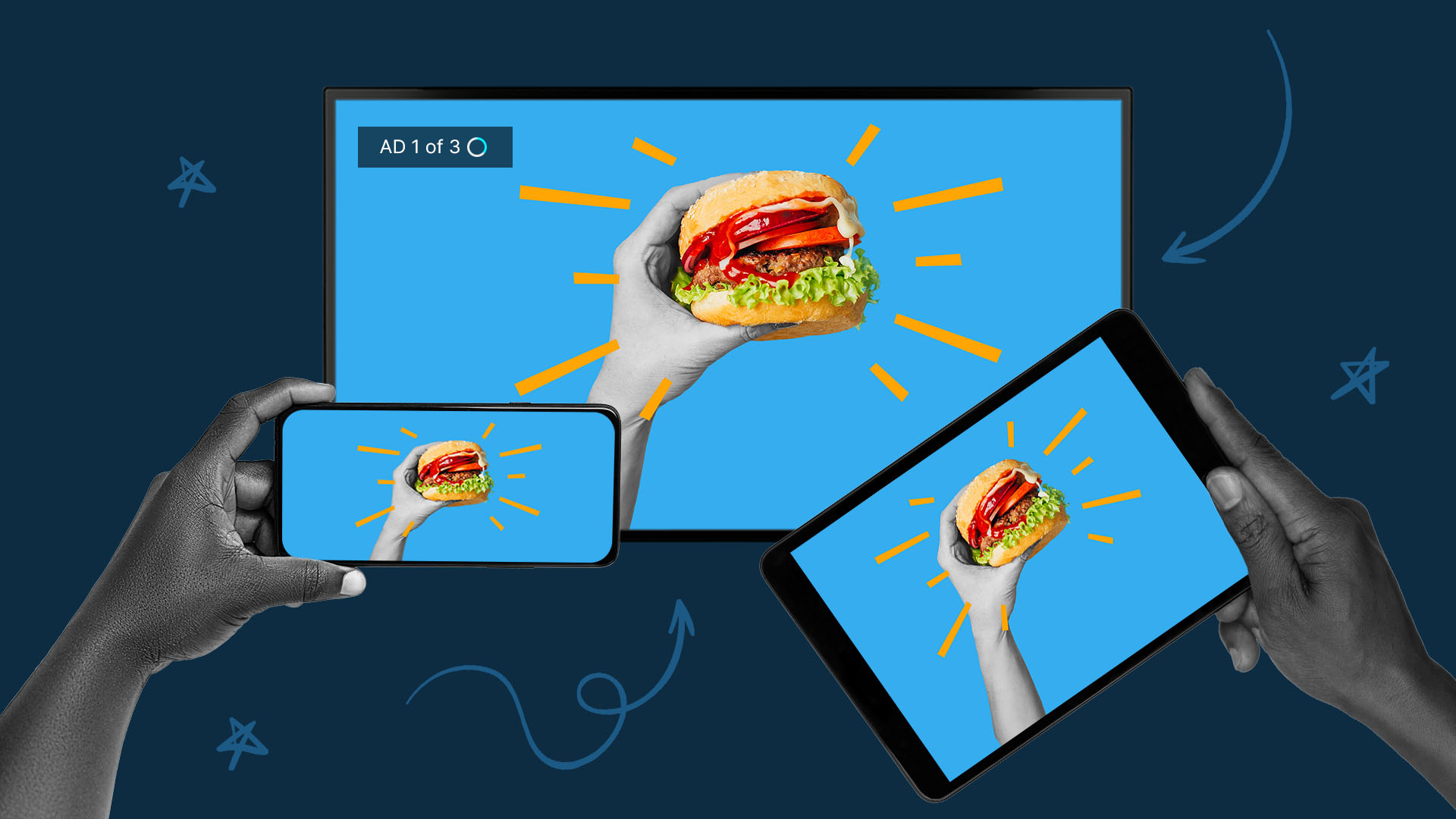Addressing an Unexpected Audience: People Who Hate Ads

While we (obviously) love video content, we know some people really despise ads. But the truth is, in many situations, they’re stuck watching them. So why not at least try to engage with these haters?
While they might not be thrilled about watching ads, these people are still going to experience them at many points in their lives. And even though these people aren’t thrilled, they’re still potential customers. Maybe you can use this opportunity to surprise them in a delightful way.
Here, we’ll walk through the concerns some people have with ads and how you can address them — and potentially find not just a new customer but an unconventional approach to video marketing in the process.
Why Do People Hate Ads?
People want to avoid ads for many reasons, but we’re going to focus on reasons you can do something about.
They get in the way.
Whether on mobile devices or Connected TVs (CTV), poorly placed ads can get in the way. Ads that crowd or show up in intrusive formats can make people miss key moments of the show, game, or other experience. It goes without saying, but this creates frustration for the user, which is then taken out on the brand that interrupted their entertainment.
They’ve seen the same ad too many times.
The last time you watched ad-supported television, did you see the same commercials during every ad break? Unfortunately, this situation isn’t uncommon. After watching the same ad multiple times during the same show, viewers can get frustrated and even develop a negative perception of the brands they see on the screen.
According to a SurveyMonkey survey, “63% of users say they only see a few things advertised, over and over again.” Whether scrolling through social media or watching a streaming service, viewers don’t want to feel like they’re stuck watching the same ad repeatedly.
They only see irrelevant ads.
When people get served ads that aren’t relevant to them, they’re going to dislike them. When they feel like every ad speaks to someone else, they can even feel excluded from advertising. Irrelevant ads are an effective way for brands to drive a wedge between themselves and their customers — which is quite the opposite of the intended goal.
How Can Brands Connect with Ad Haters?
Trying to reach an audience that doesn’t want to connect with you might seem a little counterintuitive. But like we mentioned above, the issues we’re talking about right now are ones brands can certainly do something about.
Surprise them.
People who hate ads definitely don’t expect ads to be targeted toward them, so you can use this as an opportunity to surprise them. If you start your ad with, “Look, I know you might hate ads right now,” or “Oh, great, another ad,” you’ll catch the attention of some folks who might have otherwise tuned out. With an unconventional approach, you’ve created the chance to connect with people who might not have otherwise engaged.
The team at Maximum Effort is familiar with the idea of unconventional ads. Lots of their projects answer odd questions, like “Who would Satan fall in love with?” and “What happened if we rebooted a bunch of commercials to look like they’re from the 1980s?” (You can get those answers here and here, respectively.)
Give them something in return.
Even if people don’t like ads, they might voluntarily watch them to get something for free. FAST, or free ad-supported TV, is a great example of this. This format is exactly what it sounds like: viewers receive TV content in return for watching ads on the platform. With a quick (get it?) rise in popularity, these viewers don’t just tolerate the ads, they enjoy the tradeoff. In fact, most viewers — around 89% — believe FAST offers prominent value.
Additionally, a June 2023 Statista survey found 34% of respondents explicitly stated they don’t mind advertising as long as they get something in return. In order to address this with your audience, find out what they want. Through customer surveys, polls, and more, you can connect with your audience and signal that your brand wants them to have a better advertising experience.
Speak directly to the audience.
Especially if you want to overcome your audience’s frustration of only seeing irrelevant ads, you’ll need to speak directly to your customers. With purpose-built creative, you can tailor your content to the audience segment you want to reach.
As this MNTN post outlines, you can isolate different elements of your video creative to tailor it to each audience. For example, you might want to test different hooks, talent, and messaging to see what resonates most.
MNTN also explains how a more personalized experience can improve performance across digital platforms. Since your customers are all at different spots in the buyer’s journey, they’ll each need different information in their ads. For your loyal customers, you can skip over explaining what your business is and what you do. Instead, you can spend the time showing off new products, talking about your values, and promoting exclusive deals for existing customers.
With audience-based conversations, you can connect with your customers and drive them through the sales funnel more effectively.
Think outside the box.
Many people dislike ads because they think everything looks similar or sounds too salesy. So you’ve got to think creatively about your videos to change their minds. Explore how your brand can use eye-catching visuals, interesting situations, and relatable talent to craft unique advertising.
If you’re not sure where to start, take a look at relevant trends across different social media platforms. While they might not be the perfect fit for your brand, you can use these trends as starting points to brainstorm your own campaigns.
Maintain fresh video creative.
Making and airing new ad creative on a consistent basis is essential for engaging campaigns that help your brand avoid ad fatigue. By creating a balanced strategy of both evergreen and seasonal content, you’ll be able to engage with your audience all year long.
We recommend updating your evergreen videos every quarter to start. But your audience might be more willing to watch the same videos on a different timeline than the average viewer. As you create your campaigns and show them off to your audience, you’ll get a better understanding of your creative’s unique shelf life. Once you’ve got a better understanding of your consumers, you can adjust your timeline(s) as needed.
Since seasonal content is limited to specific initiatives, it has an average shelf life of about 17 days. Since your seasonal ads are going to move quickly, you’ll want to create several variations. But don’t worry — you don’t need huge adjustments for every ad to make a significant difference. When it comes to your end-of-year video marketing campaign, you can swap out end cards, voiceovers, or background music to make a considerable difference to your viewers.
Ad Haters Gonna Hate (To Admit They Liked Your Last Ad)
As you understand more about your various audience segments, you might find certain groups or demographics simply don’t — and won’t ever — like advertising. But there are plenty more that dislike the ad experience — and they’re just waiting to be won over with new, innovative content. By following these best practices, your brand can create an opportunity to connect with even the most ad-averse consumers.
Ready to create an ad your audience will love? Contact QuickFrame today to get started.
Do More with Video
Learn how we can help you produce more quality videos affordably and at scale.


